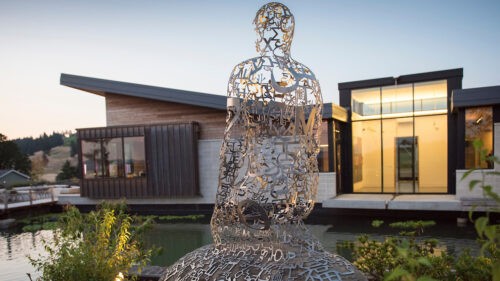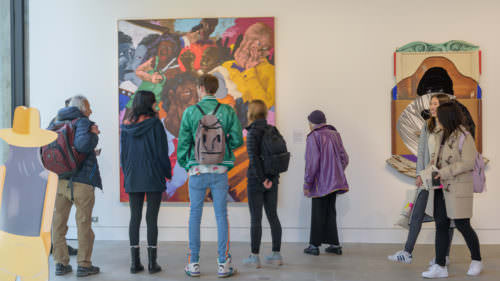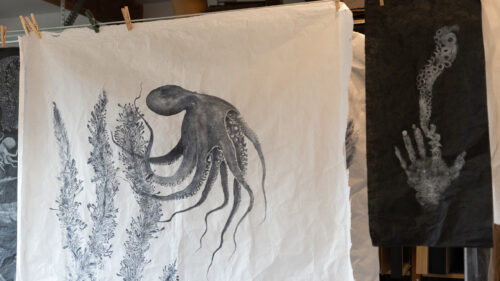If you’ve taken a stroll through one of Oregon’s state university campuses in the last 50 years — or even paid a visit to a public building — you may have noticed colorful murals or large-scale installations beautifying the surroundings. This is largely thanks to the Oregon Arts Commission’s Percent for Art in Public Places program, which has helped bring nearly 3,000 art installations to public spaces across the state since 1975. In honor of the program’s 50-year anniversary, the commission has launched “50 for 50: Celebrating 50 Years of Oregon’s Percent for Art in Public Places Program,” which highlights a selection of 50 public artworks across the state that art lovers should check out on their next trip to Oregon.
“This campaign is a tribute to Oregon’s open-air museum — a living collection shared by the people, places and stories of our state,” says Ryan Burghard, the commission’s public art and artist programs coordinator. “For 50 years, public art has transformed ordinary spaces into sites of memory, reflection and wonder. It reminds us that art is not separate from daily life but threaded through, grounding us in who we are and where we are.”
Here are a few highlights among the 50 selected pieces and where visitors can see them (note that the link includes a helpful map). Click here for a full list of artworks supported by the program.
Art Honoring Nature All Over Oregon
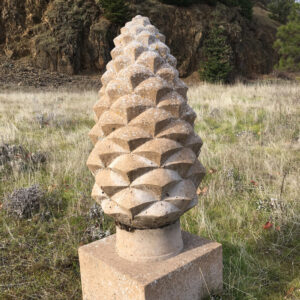
The exploration of our natural world is a common theme throughout many of the “50 for 50” works, including Oak Leaf Pavers; Pinecones; Stoneseats at the Mark O. Hatfield West Trailhead near Hood River. The installation, created by Portland artist Anne Storrs, includes 10 concrete stools adorned with images of endemic flowers, plus big ponderosa pinecones and pavers shaped like oak leaves. It’s a good place to take a break during a hike or bike ride.
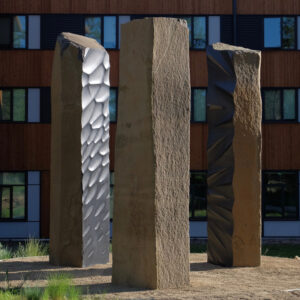
On the Oregon State University-Cascades campus in Bend, Masayuki Nagase’s Reflection of Stream draws its inspiration from natural forces, including the power of wind and the waters of the nearby Deschutes River. It consists of carved-basalt columns and boulders, a few of which double as outdoor seating for students and visitors.
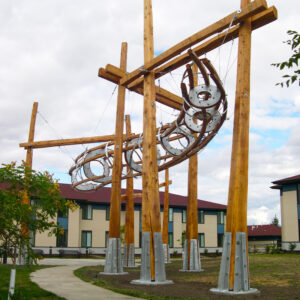
In La Grande, it’s hard to miss Lee Imonen’s Weir, a massive installation designed to resemble a weir used by many Native American communities to catch fish. The installation — located on the campus of Eastern Oregon University — is suspended using large cedar poles so that visitors can observe it from different angles. It’s especially cool to look up from the paved path that crosses below it.
Animals and Colorful Glass in the Willamette Valley and Southern Oregon
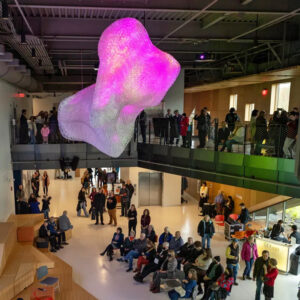
The forest theme continues at Oregon State University’s Patricia Valian Reser Center for the Creative Arts. The stunning Data Crystal was created by Refik Anadol, who used artificial intelligence data modeling, 3D printing and 10,000 hours’ worth of audio recordings from forests in Oregon’s Cascade and Coast ranges to create this color-changing sculpture. While on campus, be sure to stop by the first student union in the state to see Henk Pander’s two Memorial Union murals under graceful archways, one depicting Oregon commercial fishermen and the other a memorial for American soldiers in World War I. Known for his depictions of Oregon life, labor and landscapes, Pander documented people and events, including the flood that displaced a historic Black community in Vanport, north of Portland.
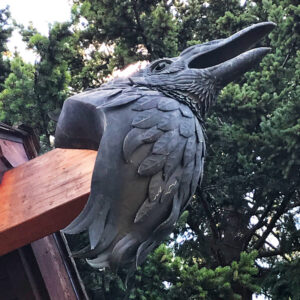
The installation at the Museum of Natural and Cultural History in Eugene, Animal Gargoyles by sculptor Wayne Chabre, gives gargoyles a Pacific Northwest spin. More familiar to travelers as beast-shaped rain spouts on Gothic cathedrals, these gargoyles take the shape of a grizzly bear, a raven, a wolf, an eagle and a salmon. After viewing them, pop into the museum to learn about the people who have called Oregon home for over 14,000 years.
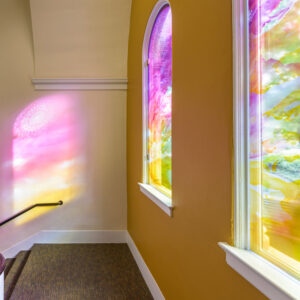
If you’re headed to Ashland for the Oregon Shakespeare Festival or outdoor fun, visit Churchill Hall on the campus of Southern Oregon University to see Alex Hirsch’s Lighting the Way. This installation consists of four colorful glass windows that cast multihued designs of a painted sky into the building’s interior. The designs change depending on the position of the sun and the weather.
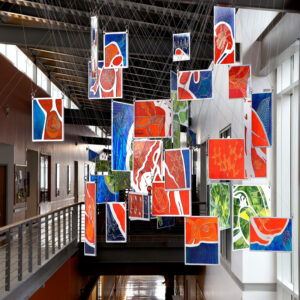
Test your perspective in the entrance of the Dow Center for Health Professionals at Oregon Tech’s Klamath Falls campus with Heart and Mind by sculptor Ralph Helmick. At first glance, it seems like a series of abstract stained-glass panels. Walk around it, and you’ll see a human heart or the cross-section of a human brain, depending on the angle from which they’re observed.
Philosophy and Elemental Art in Portland and on the Coast
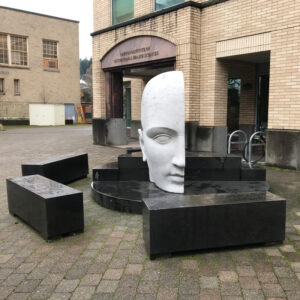
An homage to both art and philosophy, you’ll find the sculpture Vita Mensae on the Oregon Health Sciences University campus in Portland. This granite-and-marble installation by Larry Kirkland is anchored by a large white half-head surrounded by shining black slabs, one bearing a quote from historian Daniel J. Boorstin that reads “The obstacle to discovery is the illusion of knowledge.” Part of the pleasure of visiting this work is the Portland Aerial Tram, which visitors take from the South Waterfront neighborhood to the campus.
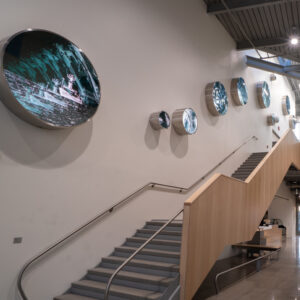
On the Oregon Coast, stop in at Oregon State University’s Hatfield Marine Science Center in Newport to see This Is Water. This mind-bending installation by Joe Thurston and his team at Site Specific features 19 vitrines that mix etched mirrors and LED illumination to create an infinity effect, similar to what happens if you stand in front of a mirror with a mirror behind you. Each vitrine displays imagery inspired by the marine sciences and the ocean.

Bridge Gate by Eric Robertson combines the strength of galvanized steel with the symbolism of wood in one gate at the Tillamook Forest Center in the Tillamook State Forest. The design is inspired by a young Douglas fir tree erupting from a nutrient-rich nurse stump, fitting for this natural history museum focused on forest conservation and Oregon’s coastal industries.
